How To Keep Data On Plant Growth Graph
Collecting and Recording Your Information
To ensure the consistency of observations made by numerous independent observers, the post-obit criteria will be used to ascertain the status "successfully germinated".
For purposes of this experiment, a seed can exist considered to have successfully germinated when two (2) distinctly separate cotyledons (embryonic leaves) tin can be seen.

Download image
The primary objective of the experiment is to make up one's mind how many of the planted tomato seeds are successfully germinated.
The photo above shows some peat pots with germinated tomato seeds. Annotation that the seedlings have merely their embryonic leaves and no true leaves accept notwithstanding appeared.
Likewise annotation that each seed produces only ane stem. The peat pot in the inset photograph patently contains two germinated seeds – show of not taking intendance when planting the seeds. It is of import to be certain that each peat pot contains only one seed.
Check your planted seeds each day. The first signs of formation will be a small bud-similar construction pushing its fashion upward through the peat in the peat pellet. In some cases the seed coat itself will be pushed upward as it adheres to a cotyledon like a small helmet.
When two distinct cotyledons appear, germination tin can be considered to accept been successful.
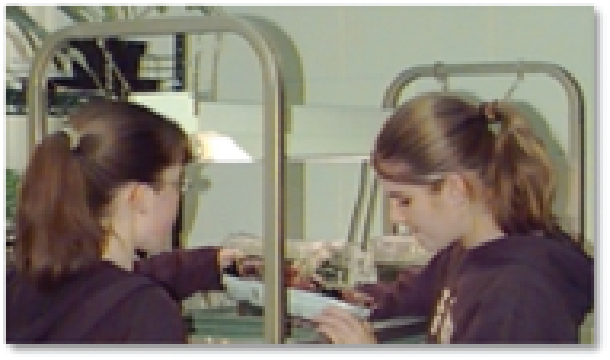
Download paradigm
Keeping a class record
An first-class way to record your observations is to prepare a large information chart, such every bit the one shown below. Brand a separate chart for each group of tomato seeds.
Marking the number of elapsed days from the initial planting on the horizontal axis and the total number of seeds germinated on the vertical centrality. Each day plot your class observations on the chart (students in this class accept cut-out bright red "tomato markers" to plot their data, but a colored "magic marker" works well). Display the graphs in your classroom where the results can be easily seen. The data collection for the experiment should be done on a daily basis for germination. Each solar day a different group of students tin be responsible for updating the classroom graph.
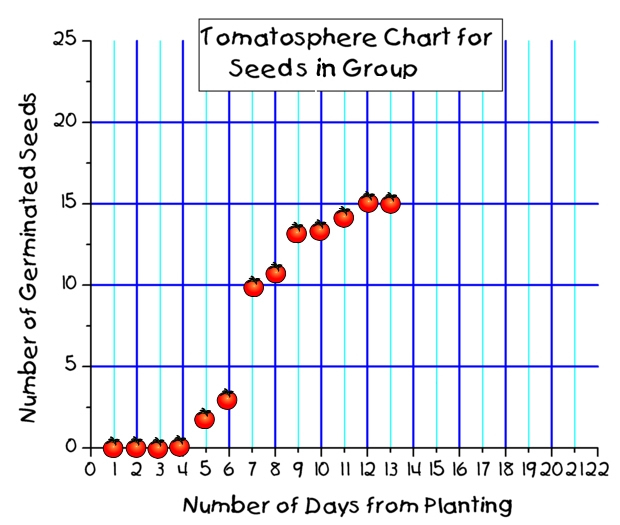
Download image
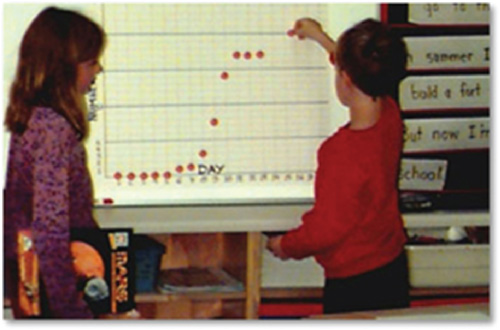
Download image
Detailed and authentic record keeping is an important part of doing science.
- Each student should create a periodical to record and track the progress of the experiment.
- The journal should incorporate two singled-out sections for recording observations, one department defended to each experimental grouping of seeds.
- Students should ready (in advance of starting the experiment) several pages in their journals in which to record each day's observations. Past having the tape pages prepared in advance a slap-up and complete set of observations can exist recorded with a minimum risk of observations beingness forgotten or information being lost.
Note the conditions nether which the observations were taken. For case, information technology would be useful to record the temperature by placing a thermometer in the region of each sample.

Download epitome

Download epitome
A typical journal page may look similar to the page shown above. Each twenty-four hours an entry is made into the data log, along with any comments or notes which might be useful when interpreting the data. For case, the temperature and the frequency of watering might testify important in agreement differences in germination rates when all the information are finally collected and compared. Information technology is always better to record too much information than not enough information.
In addition to keeping a table of the observations as the experimental results get available, it is helpful to keep a daily graph showing the progress of the experiment.
In that location are two kinds of graphs which are helpful.
The graph beneath plots the number of new seedlings that announced each mean solar day.
A sample graph is provided besides as a re-create master which can be used to generate form-sets of the blank graph; or y'all may wish to create you own.
A dissever graph should exist created for each grouping of seeds.
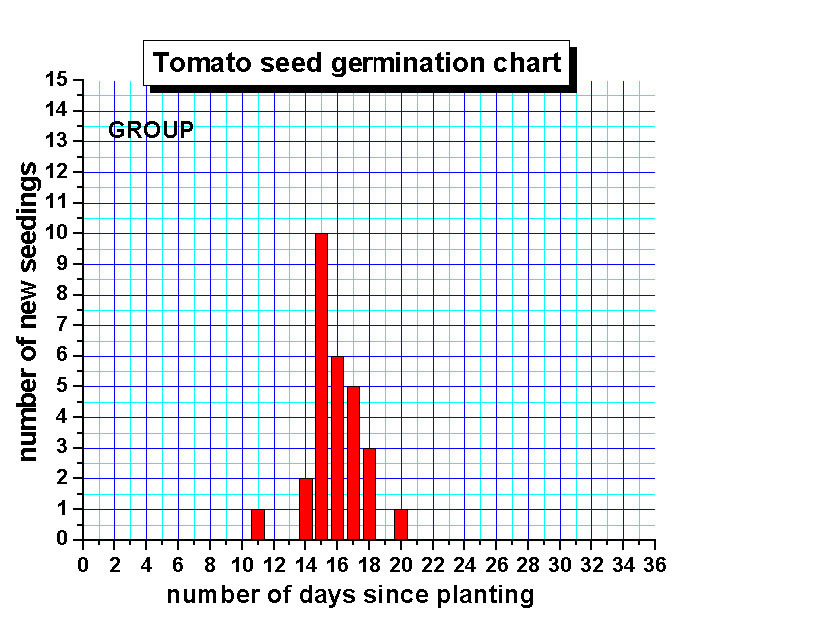
Download image
A different way of recording the data is to plot the total number of seedlings which have germinated.
When the graph shows that no further seeds are germinating, the germination part of the experiment is complete. A separate graph should be created for each group of seeds.
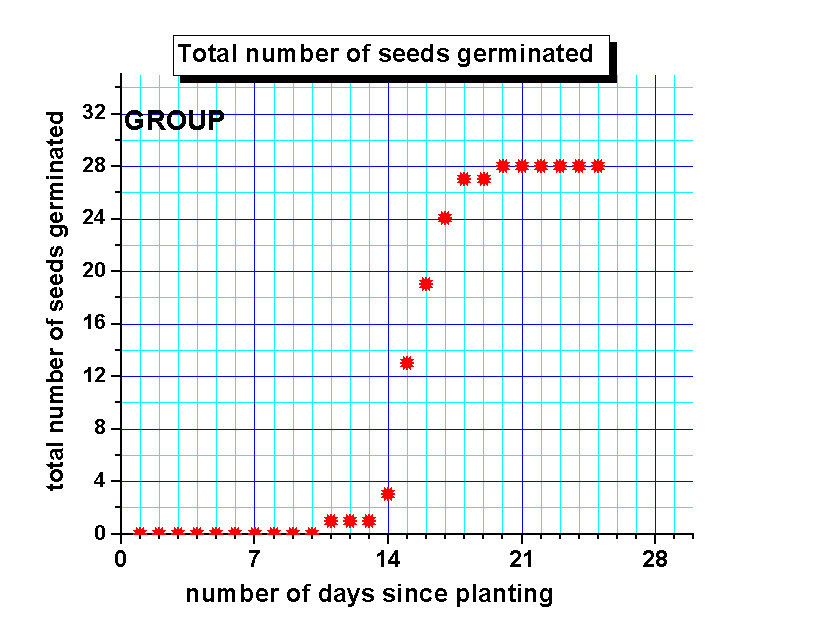
Download image
How To Keep Data On Plant Growth Graph,
Source: https://www.firsttheseedfoundation.org/resource/tomatosphere/implementing-tomatosphere/collecting-recording-data/
Posted by: cassetteofflas.blogspot.com


0 Response to "How To Keep Data On Plant Growth Graph"
Post a Comment